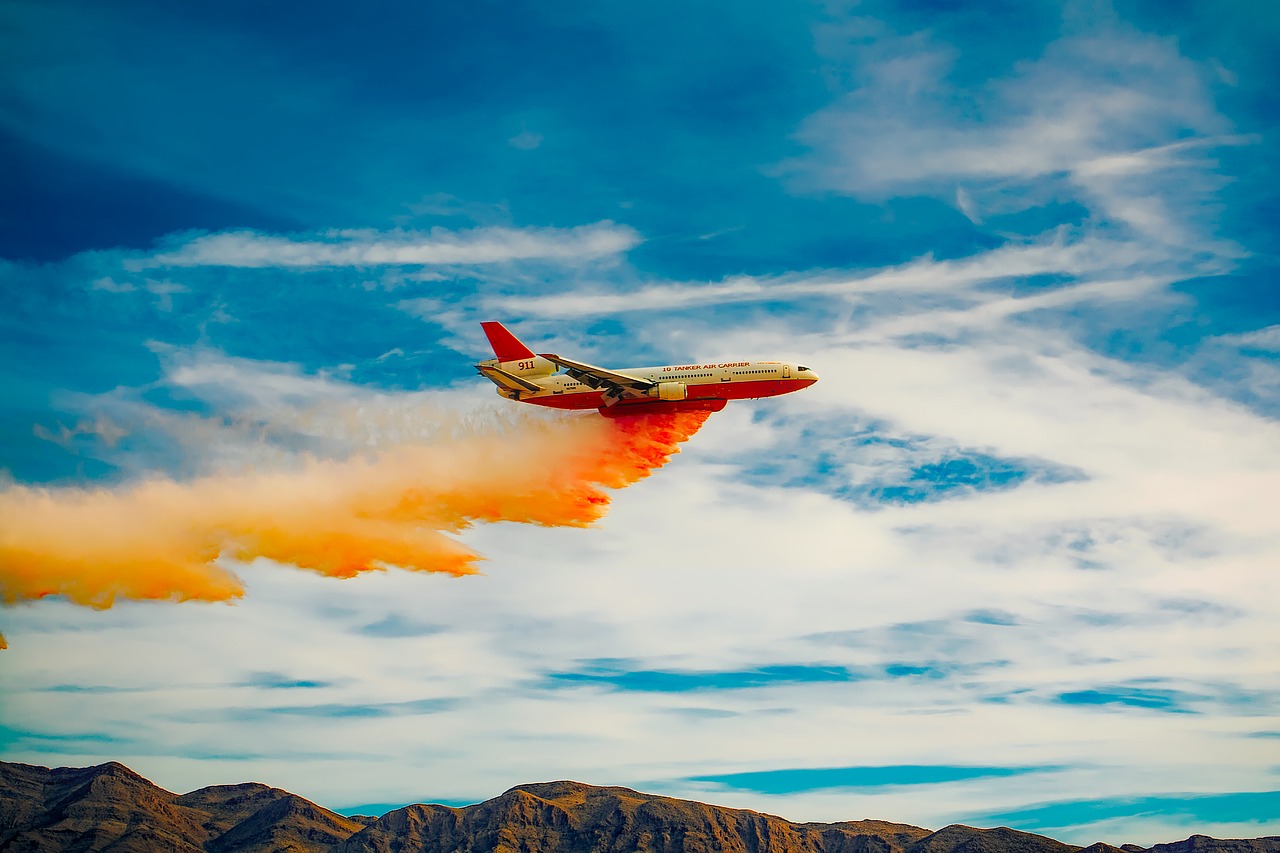Aerial Firefighting and the DC-10
By on Jan 4th 2017
Airplanes play a huge part in helping to fight forest fires.
Sometimes, fires spread rapidly and dangerously across forests in areas where people and firetrucks cannot easily reach. In the past, firefighters used to wait and let these fires run their course; they’d try to contain them rather than stop them.
We’ve taken great leaps and bounds over the years and are now often able to control and extinguish forest fires by air before they spread too far.
Aerial Firefighting Aircraft
Both fixed-wing aircraft and helicopters are used in aerial firefighting. Fixed-wing aircraft used to fight fires, called airtankers, first came about in the late 1920s with attempts at dropping water from the aircraft. Some of the earliest attempts used wooden beer kegs to dump water and fire retardant onto fires.
In 1935, the Aerial Fire Control Experimental Project was born, but attempts to control forest fires and extinguish them with the use of airplanes was not entirely successful. It took nearly 20 years to develop a working system.

Water-filled bombs were dropped from airplanes in 1947 in an experiment by the US Air Force and Forest Services. These were unsuccessful, but that didn’t discourage development of effective methods.
Soon, various organizations partnered with the U.S. Forest Service (USFS) and used a TBM-1C bomber to create the first effective system. The TNM-1C was used early in its career to extinguish the Jamieson Fire of 1954 in southern California.
Today, another method in aerial firefighting uses helicopters, which are often fitted with tanks or buckets used to disperse water and fire retardant. Tanks are either filled when they’re on the ground or they siphon from bodies of water. Some helicopters are equipped with a foam cannon.
Today, fire retardant is nontoxic and fertilizes forest soil to help with regrowth after the fire.
They use ammonium sulfate or ammonium polyphosphate and are thickened with attapulgite clay . Some use diammonium phosphate with a thickener derived from guar gum. These thickeners reduce runoff.
Fire retardants are often colored red to mark where they fall and are colored with either ferric oxide or fugitive color.
Aerial firefighting has grown and developed over the years and a number of different planes and helicopters are used today. Among the most effective aerial firefighters is the DC-10.
Fighting Fire in the Sky: The DC-10
The DC-10 Air Tanker is a series of the largest firefighting planes, dropping 12,000 gallons of fire retardant for about a mile at a width of 300 feet. In comparison, a PZL-Mielec M-18 Dromader—the smallest firefighting airplane, caries under 600 gallons of water or fire retardant.
The DC-10 has been certified in servicing wild fires since 2006, and is operated by a three-person flight crew: pilot, co-pilot, and flight engineer. They are equipped with three belly tanks that can be simultaneously filled on the ground in 8 minutes.
The tanks’ entire load can be emptied in 8 seconds, but is controlled by the crew to release more slowly as it works to extinguish fires.
Today, three DC-10 tankers are in service: Tanker 910, Tanker 911 and Tanker 912. In total, 4 airplanes have been converted to DC-10s from former airlines. These are just a portion of the aircraft used to fight forest fires along side the brave men and women who work to keep us and the planet safe from the harm these fires can cause.
And for that, we are extremely grateful.
Sources:
https://en.wikipedia.org/wiki/Aerial_firefighting
http://www.firedex.com/blog/2011/04/06/the-evolution-of-aerial-firefighting/
http://aerialfirefighting.com/index.php?option=com_content&task=blogcategory&id=2&Itemid=24
https://en.wikipedia.org/wiki/DC-10_Air_Tanker







